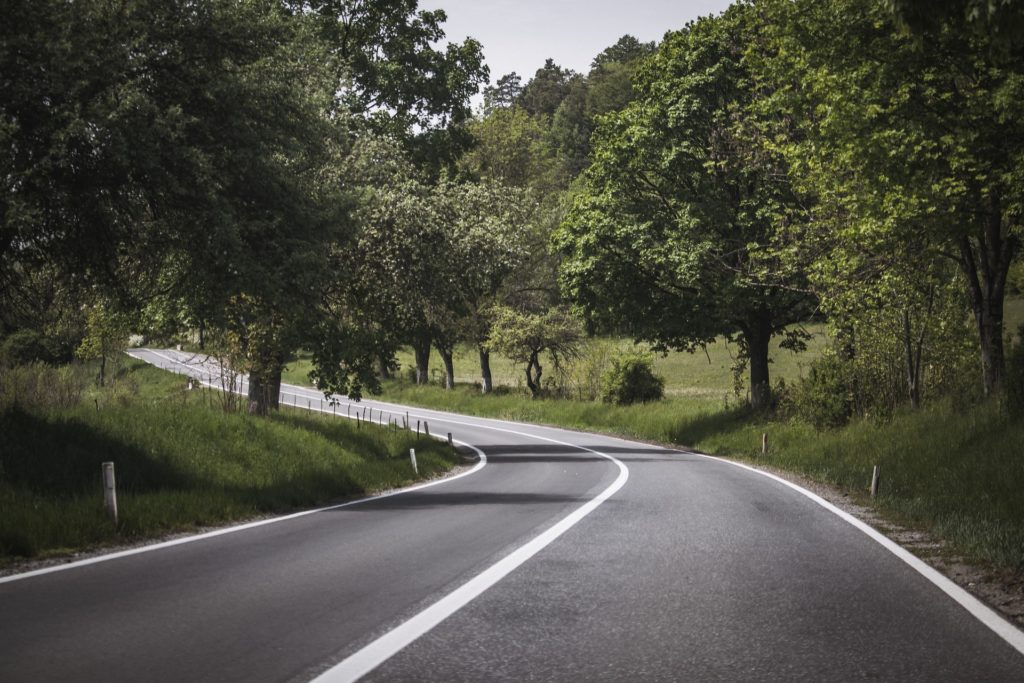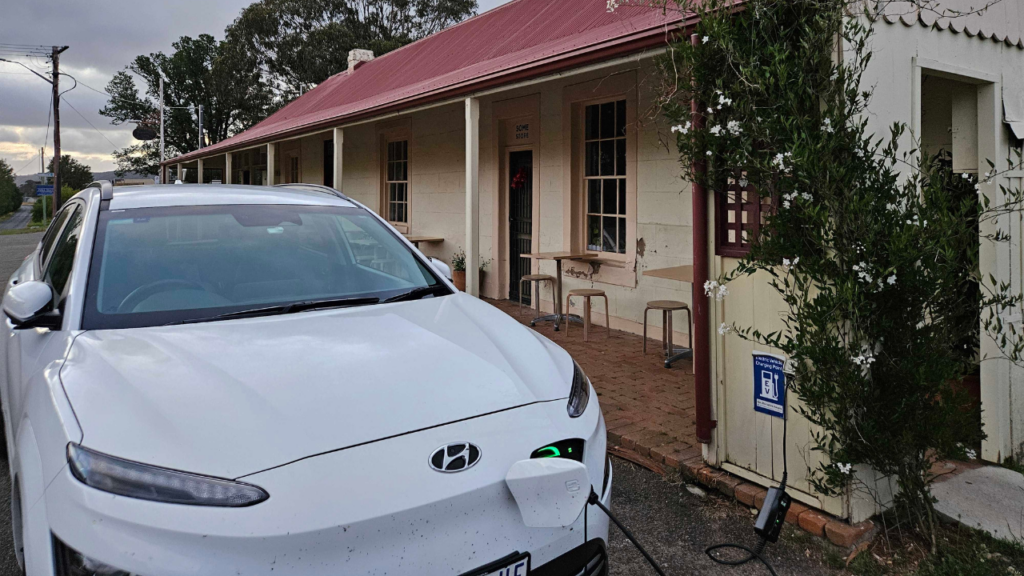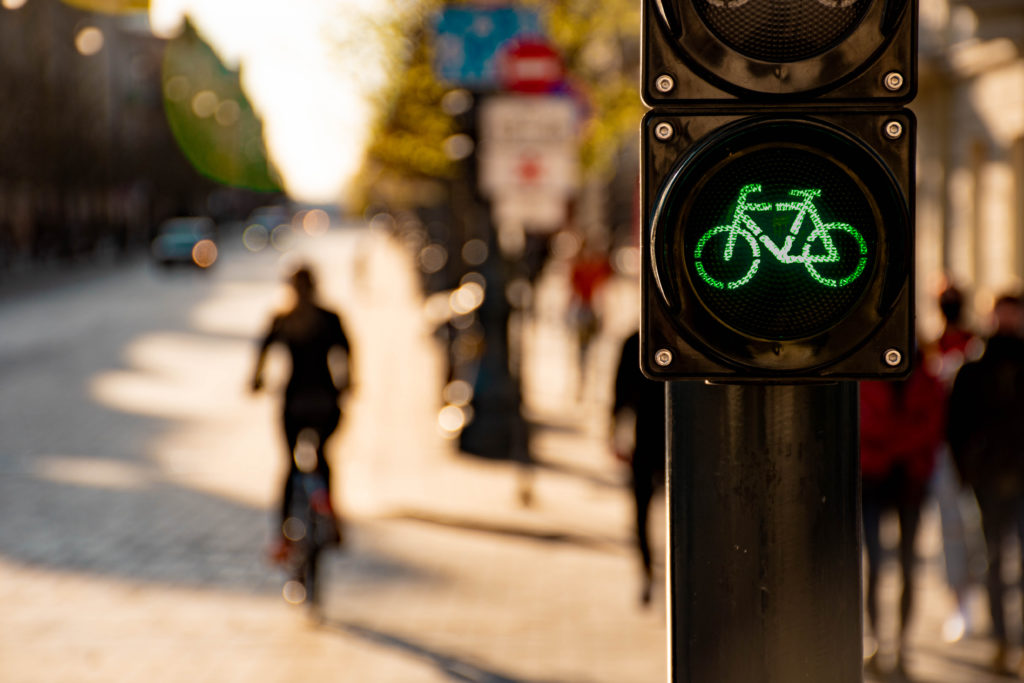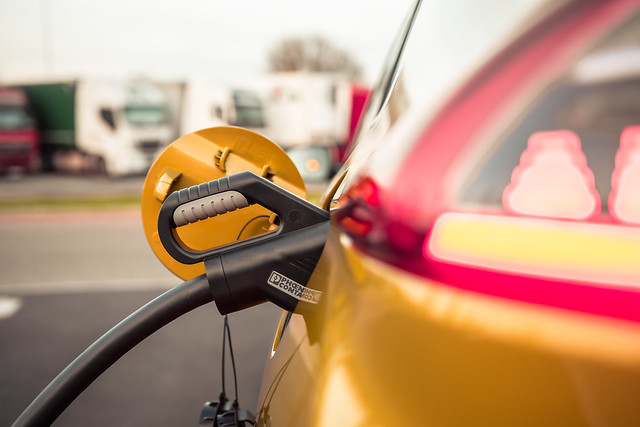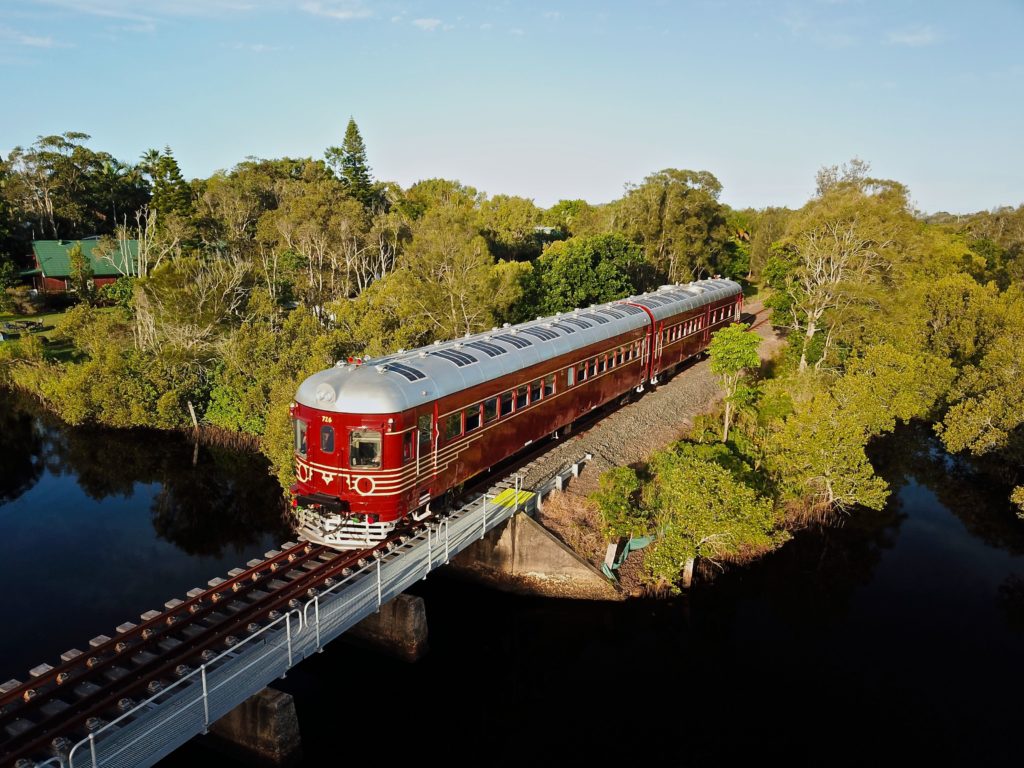Personal transport is one of Australia’s fastest growing sources of emissions, and among the top three highest sources of emissions altogether (behind only electricity and stationery energy). Whatever way you look at it, our cars are a major contributor to climate change.
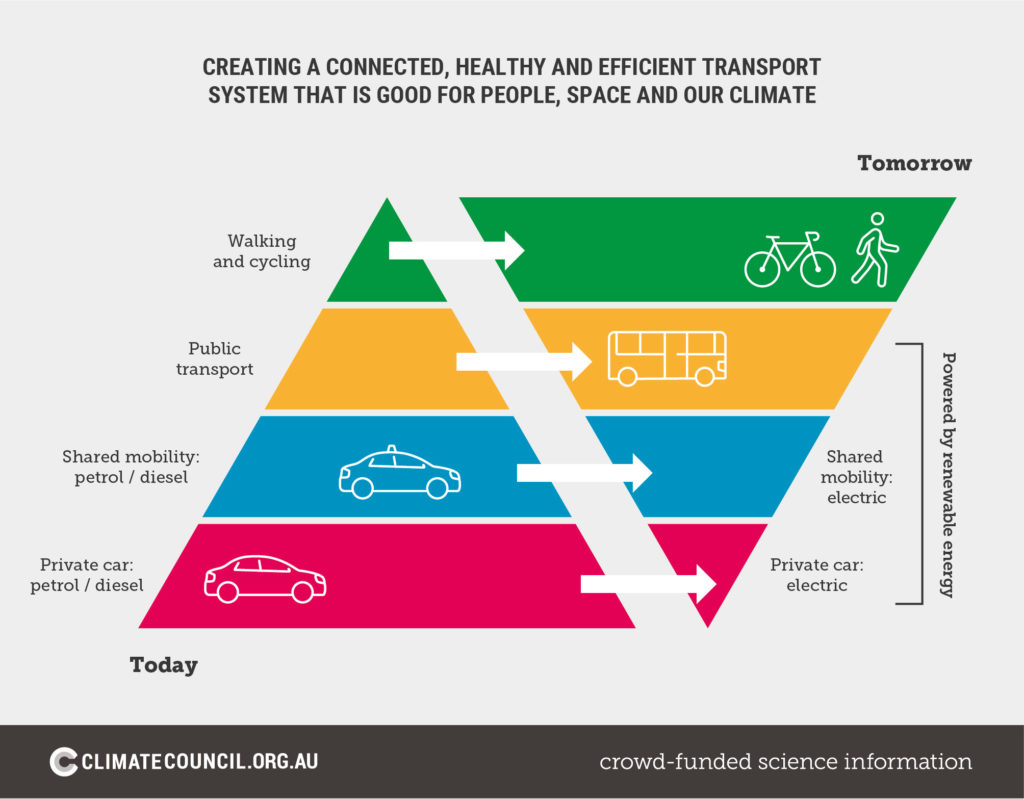
Before we continue – let’s clear the air (pardon the pollution pun). EVs are an important piece of the puzzle, but we won’t achieve our climate targets with EVs alone.
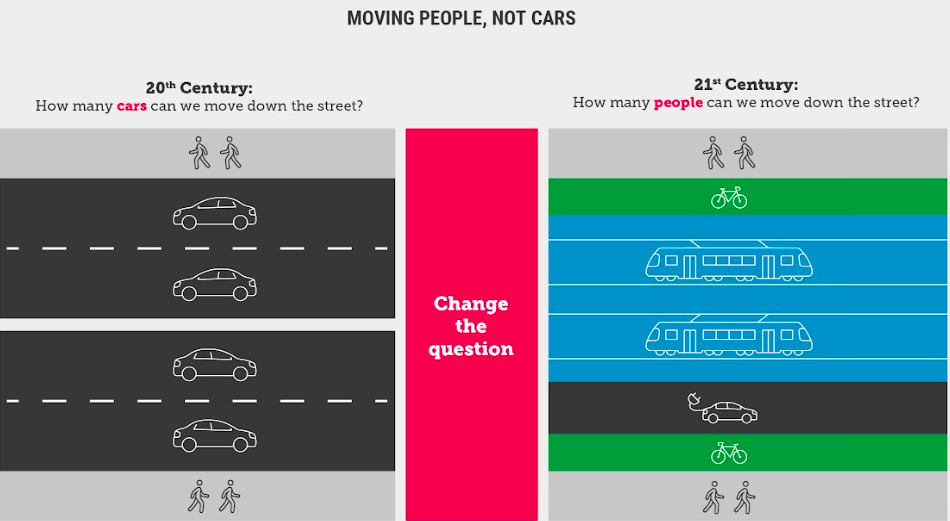
Communities flourish when we open the streets for everyone to walk, ride, play, explore and move. When we’re on our feet or on two wheels, we’re getting exercise, moving in safer ways, and feel more connected to the people around us. In fact, research shows riding a bike is the ‘happiest’ way to get around.
By changing the question to ‘How many people can we move down the street?’ rather than ‘how many cars,’ we can re-imagine public space. Instead of building more car parks, we’re able to increase the street’s total capacity and open up opportunities for more green and community space This, in turn, helps us to combat the urban heat island effect – in which black, hot bitumen is turning our cities into ginormous ovens, increasing temperatures by up to three degrees celcius.
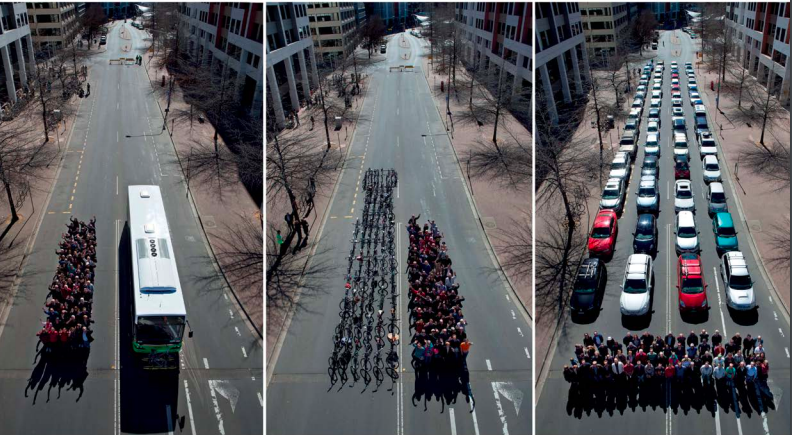
What are the benefits of a people centred transport system?
While there’s no question that we must change our transport system in order to avoid the worst climate impacts, there are many other enticing benefits from transitioning to a transport system that is centered around people who are empowered to walk, ride, use public transport or drive electric vehicles where required.
- Improving local air quality and health outcomes for communities: Air pollution from cars, trucks and fossil-fuel powered buses is responsible for an estimated 1,700 deaths every year in Australia – larger than the national road toll. Increasing the number of people taking the bus by 20% and transitioning to EVs by 2035 would prevent a shocking 2,624 deaths between 2021 and 2050.
- Save taxpayer dollars: Using the example above, increasing the number of people taking the bus by 20% and transitioning to EVs by 2035 would save the Australian economy a staggering $492 billion.20 This figure accounts for the health and social costs arising from air pollution, emissions, noise and water pollution.21 Without policy, intervention, the costs of our transport sector on our health system will total $864.9 billion by 2050.22
- Reduce car traffic: Car traffic costs the Australian economy $38.8 billion annually.25 Transitioning people towards walking and bike-riding, and away from private vehicles, is a more effective solution to car traffic than government road expenditure. Creating a safe network of bike lanes, separated from roads, helps people gravitate towards bike-riding and reduces car traffic, achieving ‘traffic evaporation.’ Further, research shows that public transport is the most intelligent way to reduce car traffic. By making public transport more convenient such as increasing the frequency of services and improving network connectivity to ensure short distances to public transport stations).
- Creating new, high quality jobs: Investment in sustainable transport is a major job creator, with an estimated 12-15 jobs created per $1 million invested in foot paths, bike lanes and EV charging infrastructure. Bike-riding is already a significant job creator. Almost 35,000 people are directly employed in the bike industry alone – that’s close to the 39,000 workers in coal mining. Further, supporting Australian electric cars, train, tram, bus and truck manufacturing can create substantial manufacturing jobs.
- Reduce the cost of living: Australians are reliant on cars because our footpaths, bike lanes and public transport infrastructure is inadequate, raising the cost of getting around for households. Walking and bike-riding, followed by public transport, are the cheapest travel options, and improved infrastructure allows more Australians to experience these benefits.
- Improve accessibility: Improving footpaths, bike lanes and public transport can make it easier for Australia’s most vulnerable and marginalised groups to get around. These upgrades can dramatically impact older people,
- Create choice: Quality urban design and investment that prioritises walking, riding and public transport will empower individuals to have more autonomy over their. commute. State and territory governments need to invest in improving infrastructure in order for people to have real choice about how they get around.
- Address the public’s needs: Investment in walking, riding and public transport is backed by Australians and has a huge impact on the day-to-day lives of those living in suburbia. Since 2010, the University of Sydney’s annual Transport Opinion Survey has found that investment in public transport infrastructure has been the highest priority transport issue for Australians – above road expenditure. It was only overtaken by COVID-19 in 2021, and was still prioritised over roads. Investment in walking, riding and public transport by state and territory governments is seen as an investment in the future by the public.
So, it’s time to reimagine the way we move… How?
| The Climate Council is campaigning for states and territories to: 1. Allocate appropriate budget for public transport (50% of the transport budget), walking and bike-riding (20% of the transport budget) in line with best practice and the public’s needs. 2. Encourage private electric bike uptake through financial assistance at point of sale and try-before-you-buy programs. 3. Convert the state’s bus fleet to clean, quiet and zero-emission buses. + We are also asking for a range of other sustainable transport policies for states and territories which you can find in our comprehensive transport policy package. |
What can you do to ask for sustainable transport infrastructure?
- Communicate with your local council and state government that you want to see better walking, bike-riding and public transport infrastructure. Learn how to write a letter to your local MP here.
- If you see a transport problem – speak up! You can tell your local council where a new bike rack is needed, or identify spots where safety is an issue for walkers.
- Talk to your friends and family – share this blog and let them know that more roads are simply not the answer to fixing car traffic. We can dream bigger! Encourage people to reimagine what our public spaces could look like – what is their ideal vision for our transport system? Then break it down and share your ideas with your representatives at the local and state level.
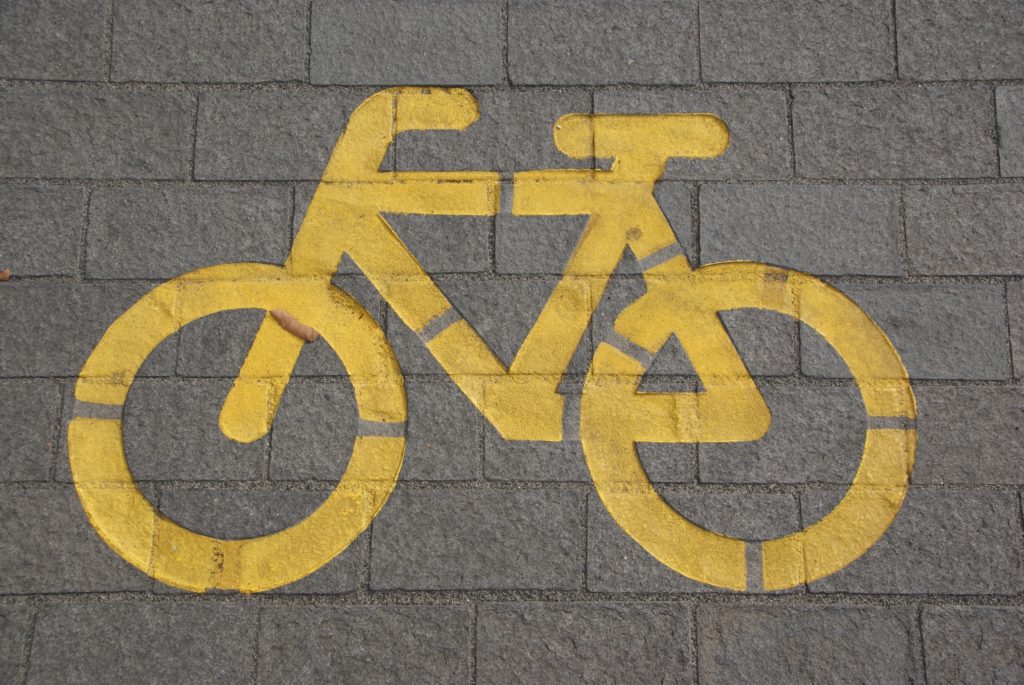
Tweaking the way you move – when you can
The way Australian cities and towns have been built forces us to be reliant on cars – so it can be hard to leave our four wheels at home and look to alternatives. Nevertheless, there may be some car trips you can swap out for a walk, ride or trip on a bus / train or tram.
- Write down a list of your most common trips, and determine if there are any that are less than two kilometres. Set a goal to walk, ride, skate or roll (for people using a wheelchair) that route more often.
- Consider your plans for the weekend – is there anywhere you could walk, ride or catch public transport to? Could you ask to meet friends closer to public transport hubs that are easier for everyone to access?
- Already using public transport? If you drive to your train station, is there any way you could catch the bus or ride your bike there?
- Do a shoutout to your colleagues, peers or school friends to ask if anyone would like to carpool (it makes the trip way more fun, after all!)
- Could you host a ‘car-free’ day at your workplace, uni or school? There could be prizes for anyone who sticks to their new approach!
- Check if you’re eligible for any public transport discounts
- Check your state or territory’s transport website for information on free public transport to major events
- Make getting around fun by getting active together – why not ride your bike to the coffee shop, shops or beach, picking up your friend along the way?
If it’s too tricky to adjust the way you move right now – you’re not alone. It’s the responsibility of governments to empower people with quality, frequent and accessible public transport services as well as safe footpaths and bike lanes. So, we’re on the case – and we’ll call upon our fantastic community members to take action when the time comes!


